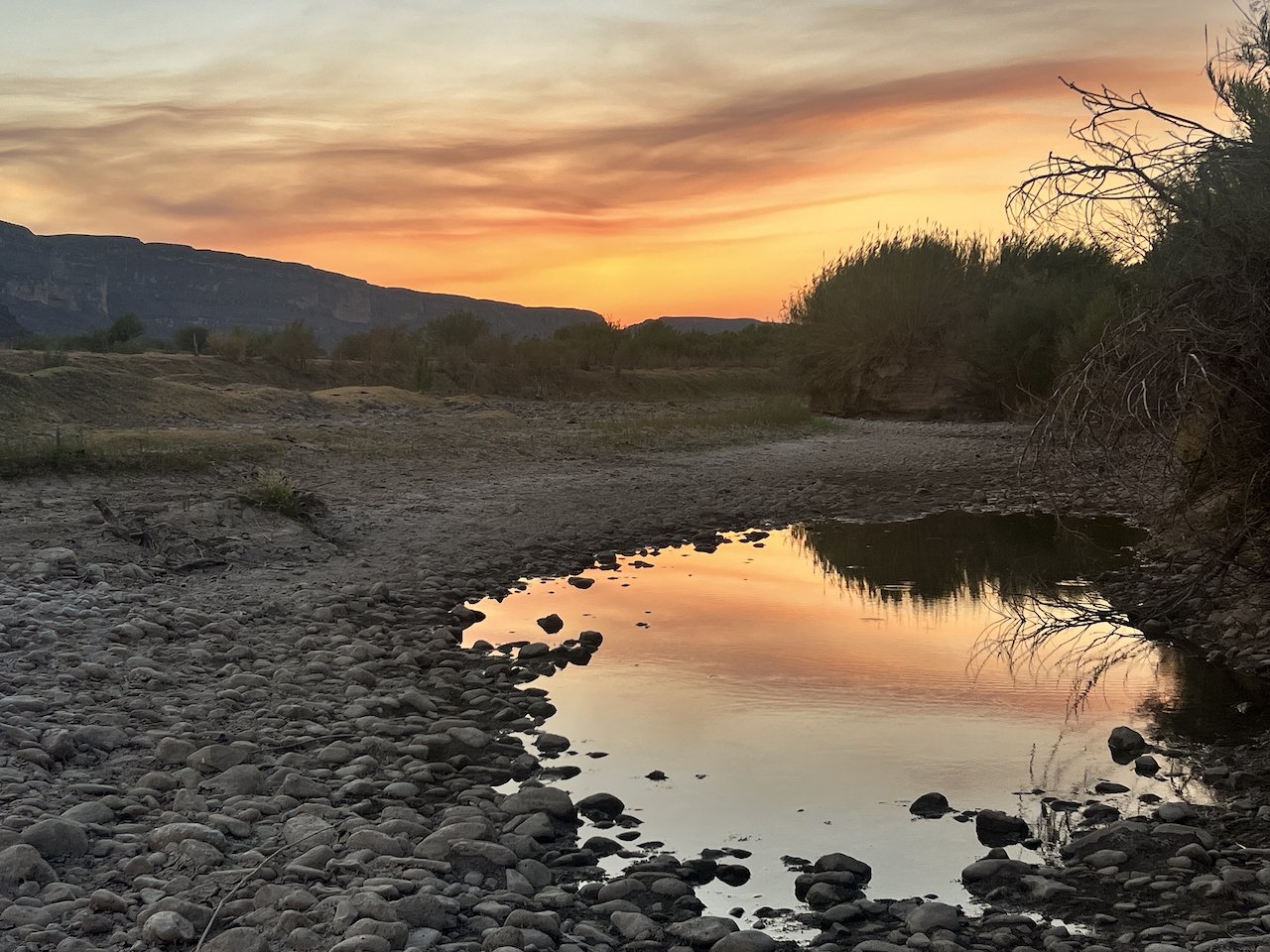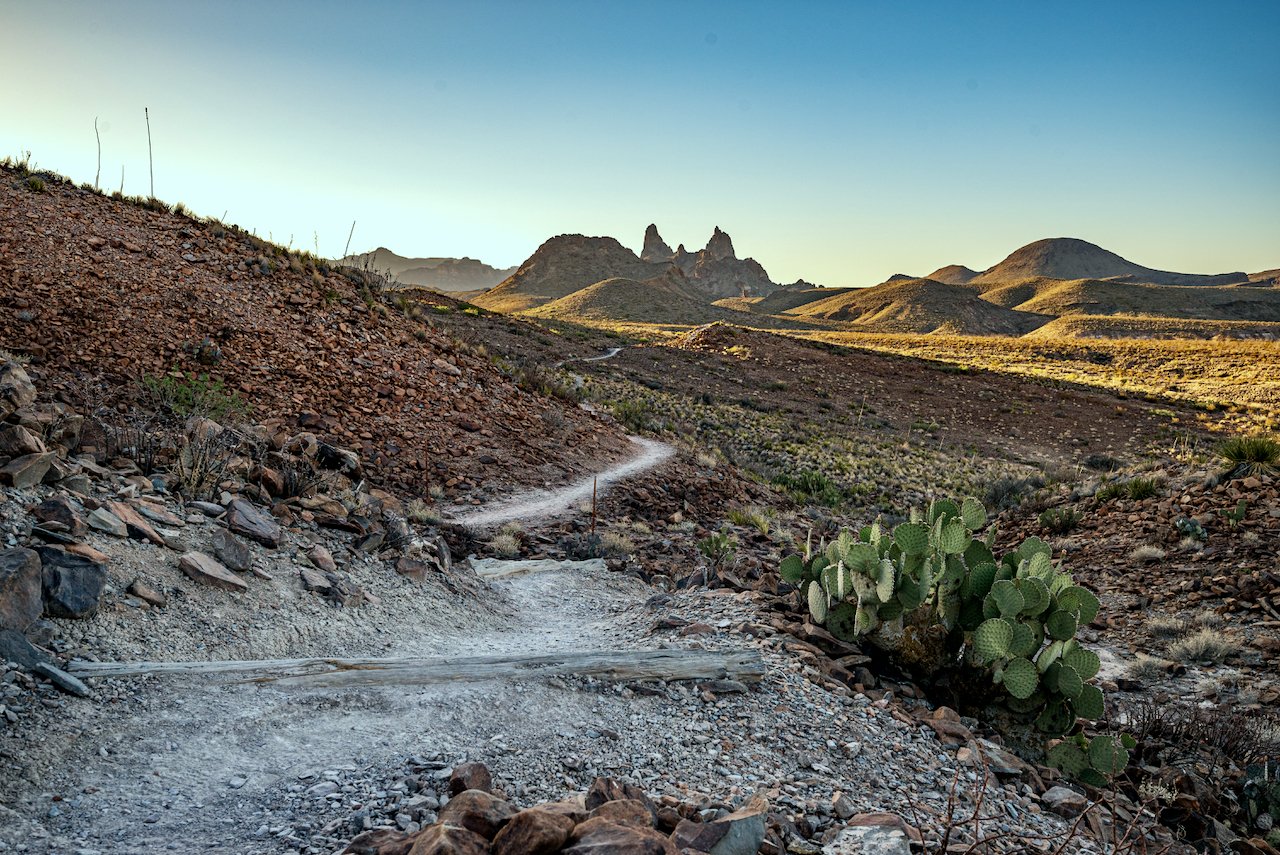Big Bend National Park
A harsh land and a disappearing river. On our way west we decided to make a detour to Big Bend National Park. It is, after all, one of the largest National Parks and we needed to get our passport stamp and add a sticker to our camper. Also, Sandi’s Grandfather was a National Parks Ranger/Naturalist and his last post before retiring was at Big Bend. We weren’t sure what to expect. What we DID expect was to find the Rio Grande River flowing between the USA and Mexico. On this expectation, we were wrong.
As we entered the National Park, at the visitor center, we asked about the Rio Grande. What we were told was that it was flowing at 0 cubic feet per second (CFS). That’s right - ZERO CFS. The river dividing the USA from Mexico, at least along a sizable stretch of the border, does not flow for significant periods of time. In this instance, it has been more than two months since the Rio Grande flowed between the countries. Yes, there are ponds within the river channel surrounded by thick mud, but they do not flow. There are also patches as dry as a dusty desert arroyo. It brought home the effects of climate change. The mighty Rio Grande - a river of over a thousand miles - doesn’t flow anymore.
Big Bend National Park - Santa Elena Canyon
Although the river often doesn’t flow, you can see the effects of it flowing in the past - the Santa Elena Canyon. It is a beautiful. There is a fun trail that follows a mile or so into the canyon along the USA side of the river. Our campground - Cottonwood Campground - was also astride the river just south of the canyon. At Cottonwood, the river is no more. As we walked through the river rounded rocks at the bottom of the river bed, we could travel freely from USA to Mexico and back at our leisure. In our current politically charged world, it was astonishing to see and experience the border without its “big, beautiful walls”.
Big Bend National Park - Rio Grande Riverbed
Part of why immigration is not an issue at Big Bend is the vastness, openness, and harshness of the area. Big Bend is deep in the heart of the Chihuahuan Desert shared by northern Mexico and Southern Texas and New Mexico. It is a more barren desert than the Sonoran Desert in Arizona or the Mohave in California. Cell signal does not exist here. If you have vehicle trouble, AAA will not be coming to the rescue.
Big Bend National Park - Mules Ears Trail
The hiking trails are vacant and beautiful in a stark way. One thing that was not vacant, however, was the heat. Even in late April high temperatures exceeded 100 degrees and nighttime temps remained in the 90s until well after midnight. Given that camping hookups weren’t available, nights were sweaty and long. Thank goodness for our power station powering our vornado fan.
While we enjoyed experiencing Big Bend National Park, we may not return for a while. Well, at least not unless it’s the the heart of winter when the weather will be moderate there.

















